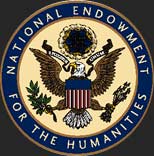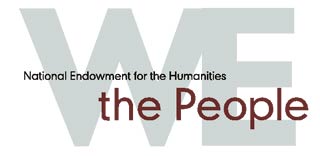Lessons
Lesson for Core Concept #9: Personalities, Perspectives and Agendas
Teresa E. Collins, Boston College High School, MA
Documents reflect the personalities, perspectives and agendas of their creators.
Goals
- Identify that the biases of the creator intentionally or unintentionally affect every document created.
- Illustrate that different creators will produce different accounts of the same event based on their own motivations, interpretations and perspectives.
- Observe that documents promoted for public consumption often promote a specific agenda.
Assessment of expected student outcomes:
Class discussion and participation; successful completion of the handout on tone; successful completion of the Things to Consider questions and the Framing Questions; successful completion of the Further Exploration Assignment.
Instructional procedures:
2-3 hours, depending upon if the teacher utilizes all options (May be divided into 2+ class periods, depending upon the time.)
Before the lesson:
This time frame works when in the previous classes, the teacher assigns this long term assignment: Each students will read 3 documents and complete Document Analysis Handouts and Things to Consider from ONE topic from the following list; this corresponds to The Coming of the American Revolution Website. At least two students should be assigned to one topic. (This lesson will also work if everyone has the same topic; or for a variation, the teacher may assign all topics but over several days).
Add link to PDF version of TABLE A.
Activity:
- Introduction: Remind students of their assignment for today. Ask them for general observations from their assignment.
- Activities:
- Then lead a discussion on the following questions. What do you notice about the documents and the similarities in tone and perspective? What can we infer about the authors?
- Go over the Document Analysis and Things to Consider for the Documents.
- Break students into their groups, so that all members of the group have the same topic. Have them answer the framing questions.
- Then, while the students are still in their groups, pass out biographies of the authors either electronically or on paper. Have students complete a tone analysis with their partner(s), and have them incorporate the biographies into this analysis. Have the class reconvene as a whole and share their observations.
- Have the students complete a Venn-Diagram* using two of the documents. This Venn-Diagram can be the basis for their 5 paragraph essay that answers the following prompt. For modifications for diverse learners, students can work independently or with a partner.
- Conclude with a Socratic Seminar on a tone and the topic(s) listed above from The American Revolution. Divide students into two even groups. Choose a student leader in each group. Group 1, under the direction of the student leader, will sit in a circle to question and analyze the topic of study and pertinent documents. Group 2 will assess the comments, textual references and discussion of the members of Group 1. After 20-30 minutes, switch the roles of the groups. Have students follow up with a reflection paper that self-assesses their performance.
- For a long term assignment, have students complete one task from The Further Exploration Assignment located at the bottom of the document section on the website.
- Closure: Have students write an exit ticket as to what they learned about tone or how two or more folks viewed a particular event in history.
- Homework/ Long Term Assignment: Complete The Further Exploration Assignment.
- Modifications: Group work to help diverse learners. The graphic organizer also aids students with difficulty.
- Prompt: To quote the cliché, “There are two sides to every story.” Using at least two documents from The Coming of the American Revolution, explain, in a well-written multi-paragraph essay, how two authors and their documents prove this statement. As you craft your essay, be sure to also explain what this shows about the complex issue of the point of view in history.
- Rubric for Essay:
- /20 Structure of Essay: Intro Paragraph: Thesis and supporting Points; Body Paragraphs, Transitions
- /40 Adequate support and analysis from primary sources and secondary sources
- /20 Mechanics (spelling, grammar, punctuation)
- /20 Style: Word choice; varying sentence structures.
- *A Venn Diagram is composed of overlapping circles. In language arts instruction, these diagrams enable students to identify similarities and differences visually in order to organize their thoughts for writing.
Download
PDF document of TABLE B, 'So What's their tone?'



